Contents
From the end of summer or the beginning of autumn, the Japanese anemone begins to bloom in our gardens. This exquisite herbaceous plant is not at all like the showy crowned anemone or the modest but elegant forest primrose. Japanese autumn anemone is undemanding to care and grows rapidly. It belongs to the anemone genus, numbering more than 150 species, and through it enters the vast ranunculus family, widely distributed throughout the Northern Hemisphere, with the exception of the tropics.
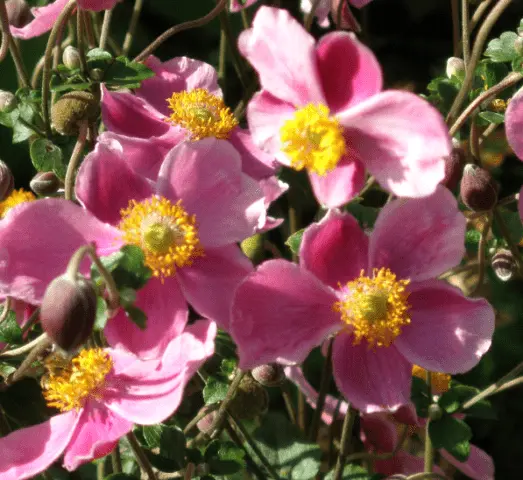
Description of the autumn anemone
Anemones blooming in autumn differ from other varieties in high, up to 1,5 m, growth, and buds collected by loose umbrellas. Their rhizomes are creeping, the leaves are large, pinnately dissected. The flowers are medium-sized, similar to chamomile, in varieties or hybrids they can be semi-double. The color of the petals is all shades of white and pink, the stamens and the middle are yellow or salad. There are varieties and hybrids of the Japanese anemone with raspberry and purple flowers.
In any case, you will not see such a riot of colors as in crowned anemone. But the Japanese anemone has its own charm. She does not immediately attract attention, but it is difficult to take her eyes off her graceful flowers.
There are sources that claim that the Japanese and Hubei anemones are one species. Just for a period close to a millennium after the appearance in the Land of the Rising Suns, the flower has undergone some changes. Supporters of the separation of species indicate that the leaves of the Japanese anemone are grayish and the height does not reach a meter. Khubei anemone is distinguished by a dark green bush, 1,5 m tall, its flowers are smaller. In any case, it is difficult for a non-specialist to understand these differences. Look at the photo of species plants, they really look alike.
Japanese anemone
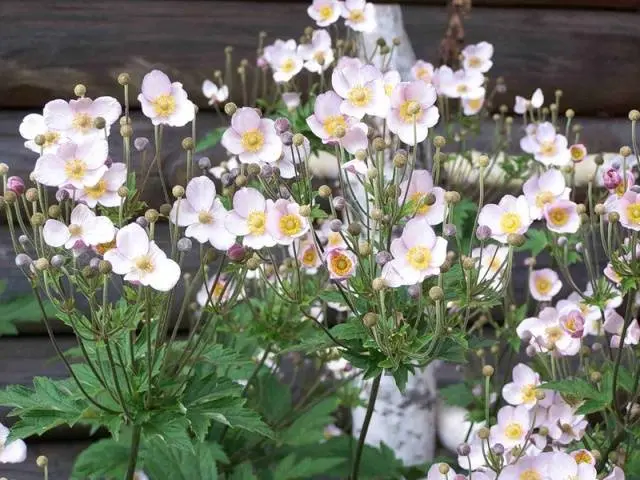
Vetrenitsa Hubeyskaya
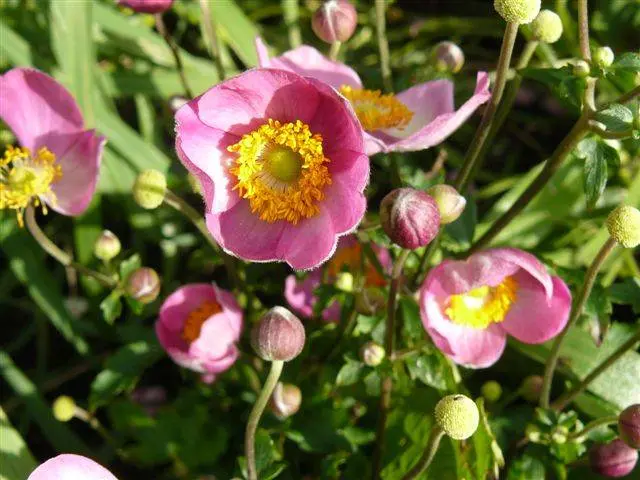
Varieties of autumn anemones
It is difficult to list all the varieties of autumn anemones, as well as to determine exactly whether they belong to the Hubei anemone, Japanese or hybrid. Flowers can be sold under any of these names. We will give a description of several of the most popular varieties.
Crispa
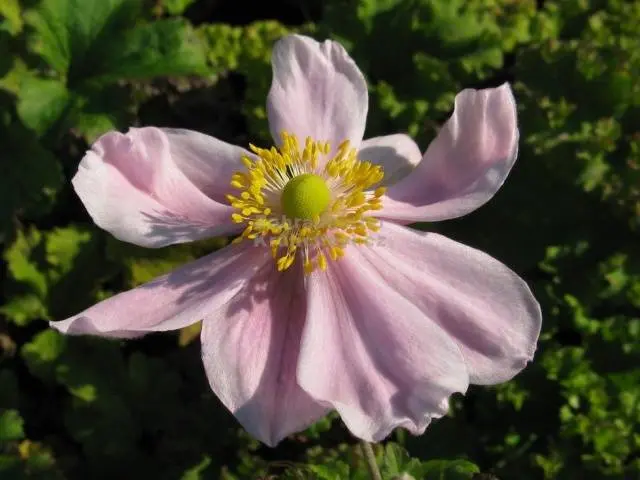
Crispa anemone is an excellent outdoor plant. Blooms profusely from late summer to mid-autumn. Her petals are slightly curved, pale pink with a pearly sheen, the middle is yellow, a bush 60-70 cm high. Anemone Khubei Crispa differs from other varieties in corrugated leaves of light color. Grows well in partial shade.
Pretty Lady Julia
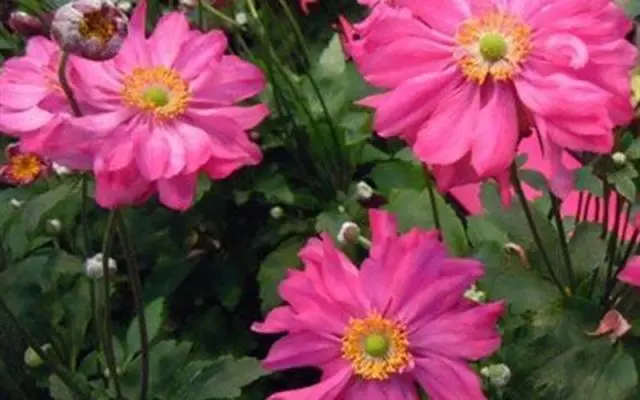
Anemone Cute Lady Julia – a new variety with rich pink or crimson semi-double flowers and a yellow center. Numerous buds appear at the end of summer and bloom until the end of autumn. The bush is miniature, it grows no higher than 60 cm. It is better to plant an anemone in a place protected from the sun.
Whirlwind
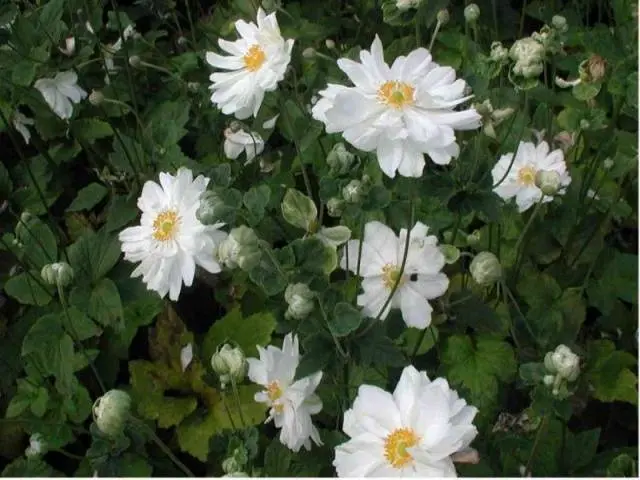
Anemone, whose name translates as “whirlwind”, can be sold under the names Velwind, Velwind or Wilwind. Its height reaches a meter, semi-double white flowers with golden stamens are collected together in 10-15 pieces.
Honorine Jobert
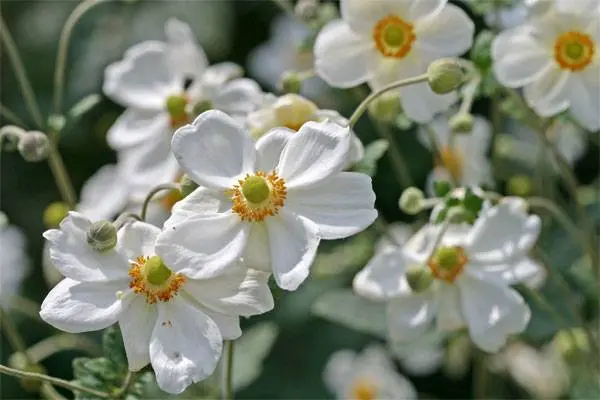
Anemone Japanese Honorine Jobert is more often sold under the name Honorine Jobert. Its height is about 80 cm, large, dissected leaves are grayish-green. Anemone flowers are simple, snow-white, with yellow stamens.
The most robust
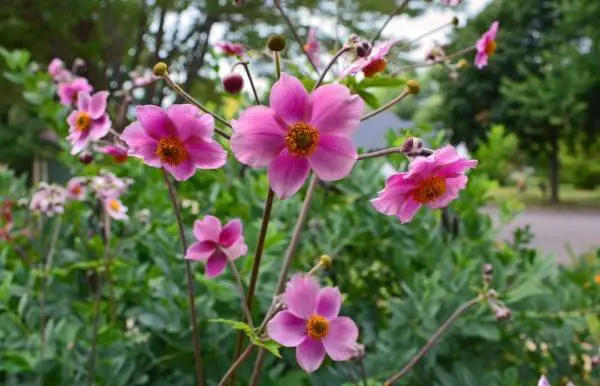
This flower is a little different from the previous ones. This is not surprising, because the Robustissima variety belongs to felt anemones, in which the leaves are pubescent from below. The flowers are bright pink, simple, similar to dahlias Cheerful guys, which can be clearly seen in the photo. But the bush can hardly be called miniature, it reaches 120 cm, and the buds are small.
Japanese Anemone Care
Growing autumn anemones will not be difficult even for beginner gardeners. But it reproduces best by dividing the rhizome, which does not like to be disturbed.
Anemone location
So that planting and caring for anemones that bloom in autumn is not a hassle, take the placement of flowers responsibly. The best place for them is a place protected from the wind by buildings, planting shrubs or trees with an openwork crown. Autumn anemones are quite tall, herbaceous perennials are unlikely to be able to cover them.
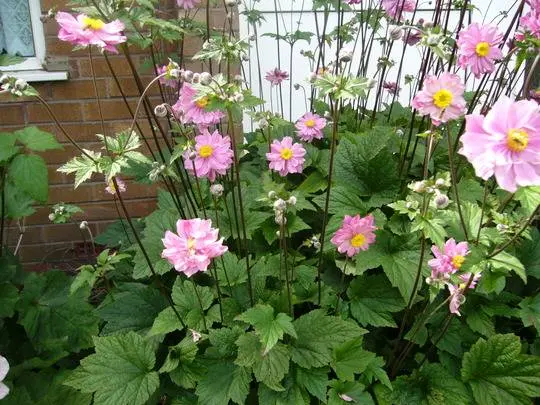
Anemone grows well in partial shade or where the midday sun cannot scorch their delicate petals. The soil needs moderately fertile, loose. Unlike the crown anemone, it can be not only slightly alkaline, but also neutral. The soil should pass water well and not get wet. If the site is damp, drainage from crushed stone or broken red brick should be arranged under the flowers.
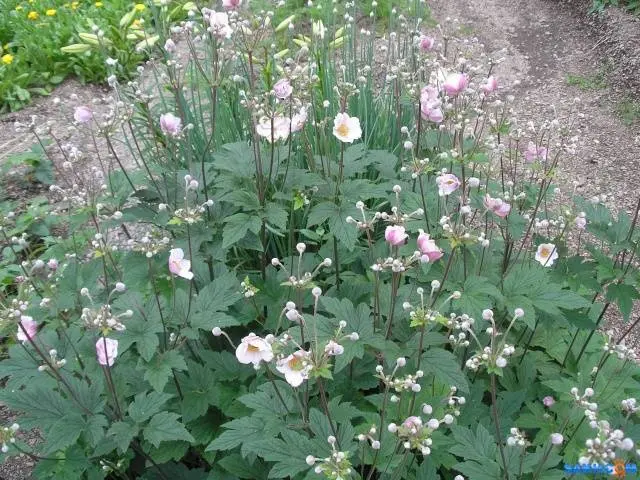
Planting anemones
It is best to plant autumn anemone in the spring, but if necessary, this operation can be postponed to autumn. First, the soil is dug up, pebbles and roots of weeds are removed, if necessary, organic matter is added and deoxidized with dolomite flour, ash or lime. Then the Japanese anemone is planted so that it grows freely, and the roots do not compete for water and nutrients with other plants.
The depth of planting anemones in open ground is 5 cm. Be sure to water the flowers.
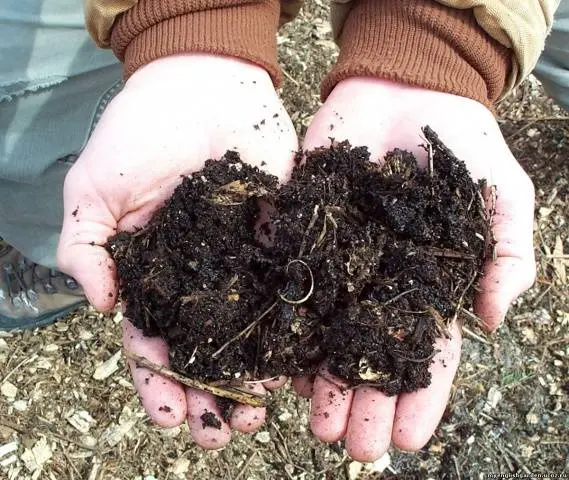
Anemone care
All anemone care comes down to manual weeding, periodic watering and top dressing. The Japanese anemone is not as demanding on soil moisture as the crown anemone. In the spring, it is watered once a week, and only if there is no rain for a long time. In hot, dry summers, this is done more often, but little by little. Anemone roots are located in the upper layers of the soil, which quickly loses moisture at high temperatures, and cannot take water from the lower layers of the soil. It is impossible to loosen the earth next to the anemone, in order to facilitate care and reduce weeding, mulch it.
Often in our country the Japanese anemone grows without top dressing at all and cannot show itself in all its glory. If you give her fertilizer three times a season, your flowers will be strong, healthy, their color will become bright, and the buds will be larger.
- In the spring, when the first leaves appear from under the ground, anemones need organic fertilizers. If you have mulched the soil with dry mullein since autumn, you do not need to feed them.
- During the formation of the first buds, give the anemone a mineral complex.
- In late September – early October, feed the anemone with any nitrogen-free fertilizer or scatter ash under the bushes.
Anemone shelter for the winter
In the south, Japanese anemones do not need shelter for the winter. Their planting can be covered with a thin layer of mullein, this will serve as a precautionary measure and will allow you not to waste precious time on the first feeding in the spring.
In regions with a cold climate, anemones are covered with peat, humus or fallen leaves. The mulch layer should be thicker where winters are harsh or snow rarely falls.

Reproduction of anemone
Reproduction of the Japanese anemone is difficult only because fragile roots are injured when dividing the rhizome. Their recovery takes about a year.
Once every 5 years, dig up an anemone bush, carefully divide the rhizomes into parts, process the cuts with charcoal, and plant them in a new place. You can do this in the fall, but it is better to wait until spring. If there is a need to get several new plants without transplanting, you can propagate the anemone by carefully separating the side shoots from the mother bush with a shovel right in the ground.
Japanese anemone in landscape design
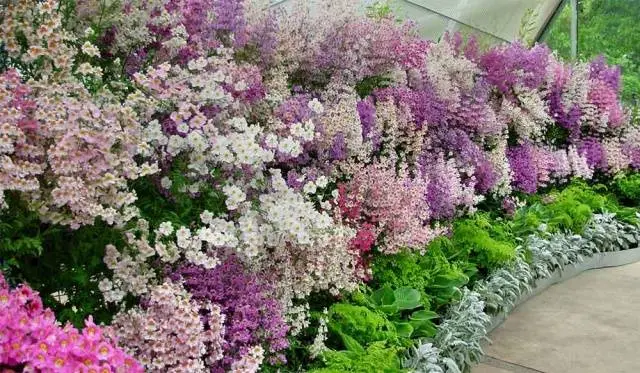
Autumn anemones grow quite tall, except for some new varieties. They look great as a tapeworm, focal plant and as part of woody landscape groups. Anemone can be planted in a flower bed along with other perennials of suitable growth, as a high border or along the perimeter of a fence, gazebo or outbuilding.
Japanese anemone goes well with such plants:
- large hosts;
- ferns;
- any conifers;
- remontant roses with bright flowers;
- bushes and trees changing the color of leaves by the end of the season.
Conclusion
In autumn, the Japanese anemone has practically no competitors in the garden. This flower is so different from a rose that they can make excellent companions. Plant an autumn anemone in your yard and you will become a fan of it forever.









